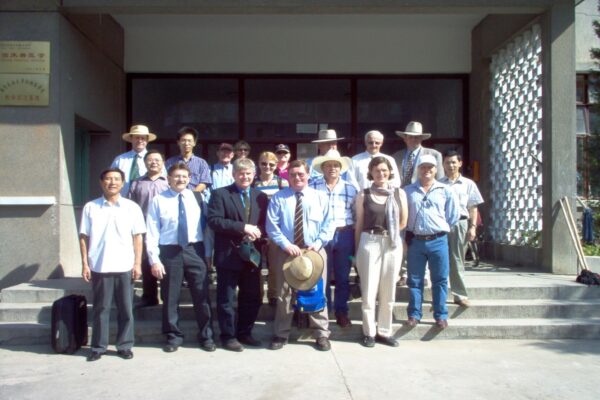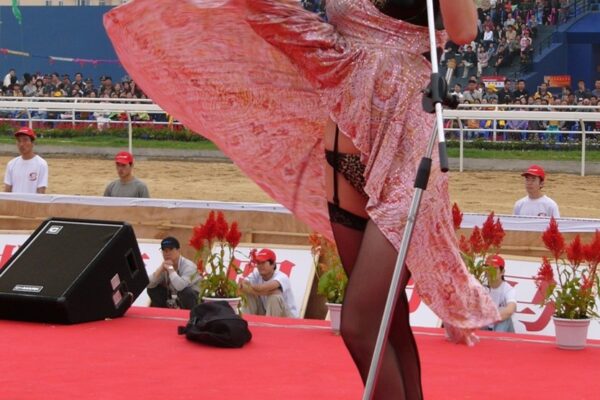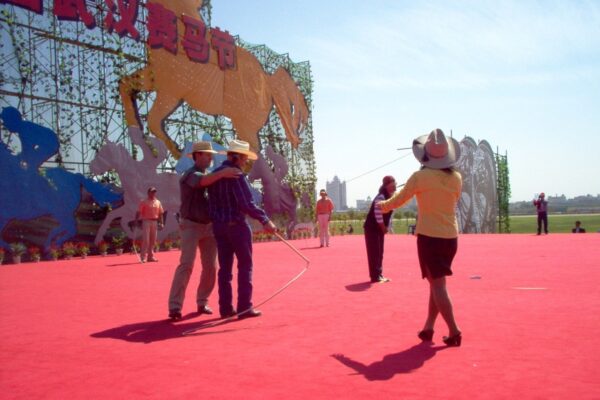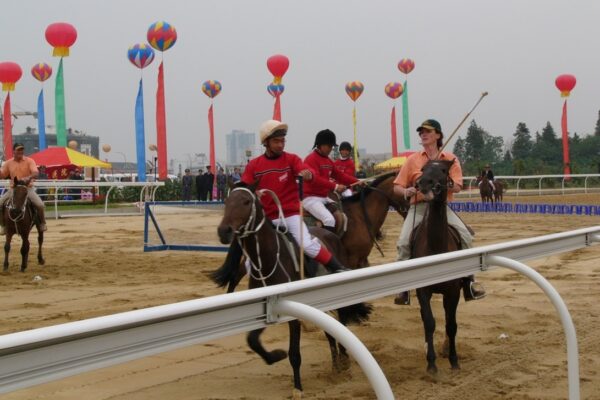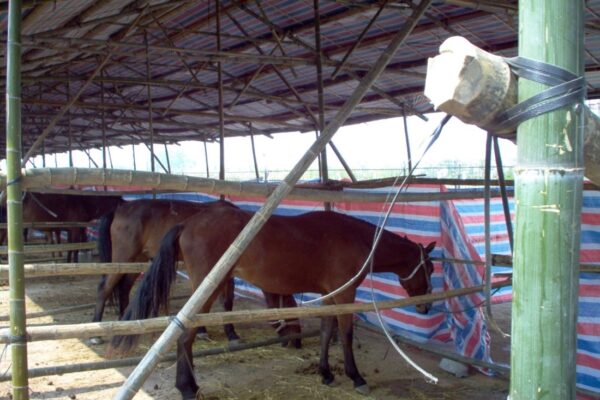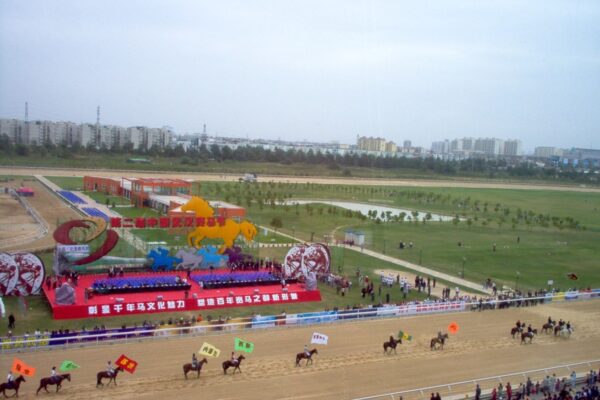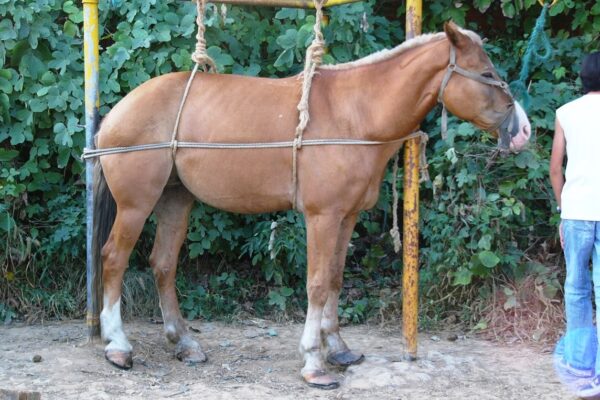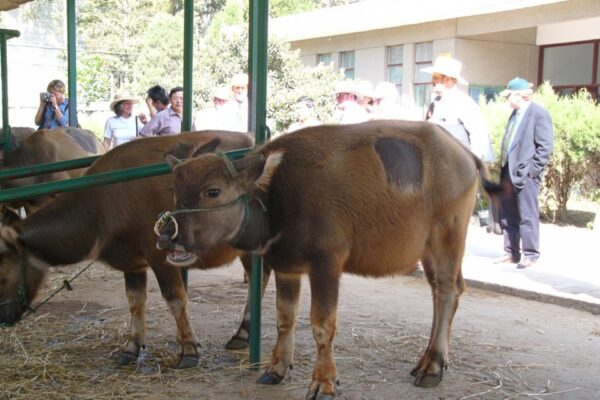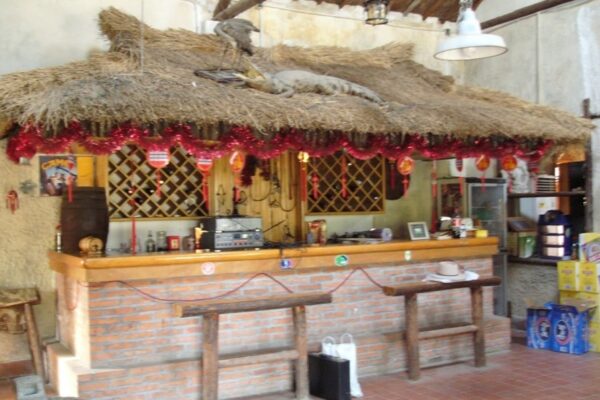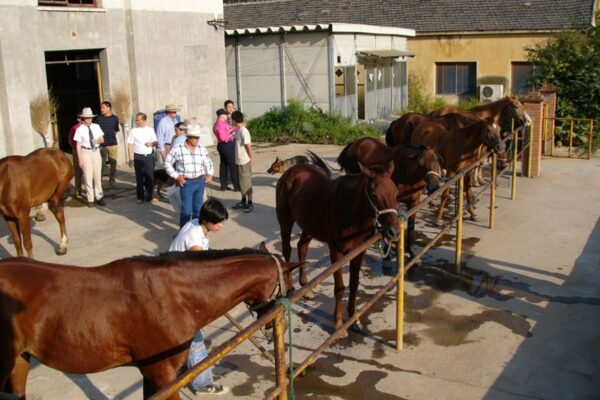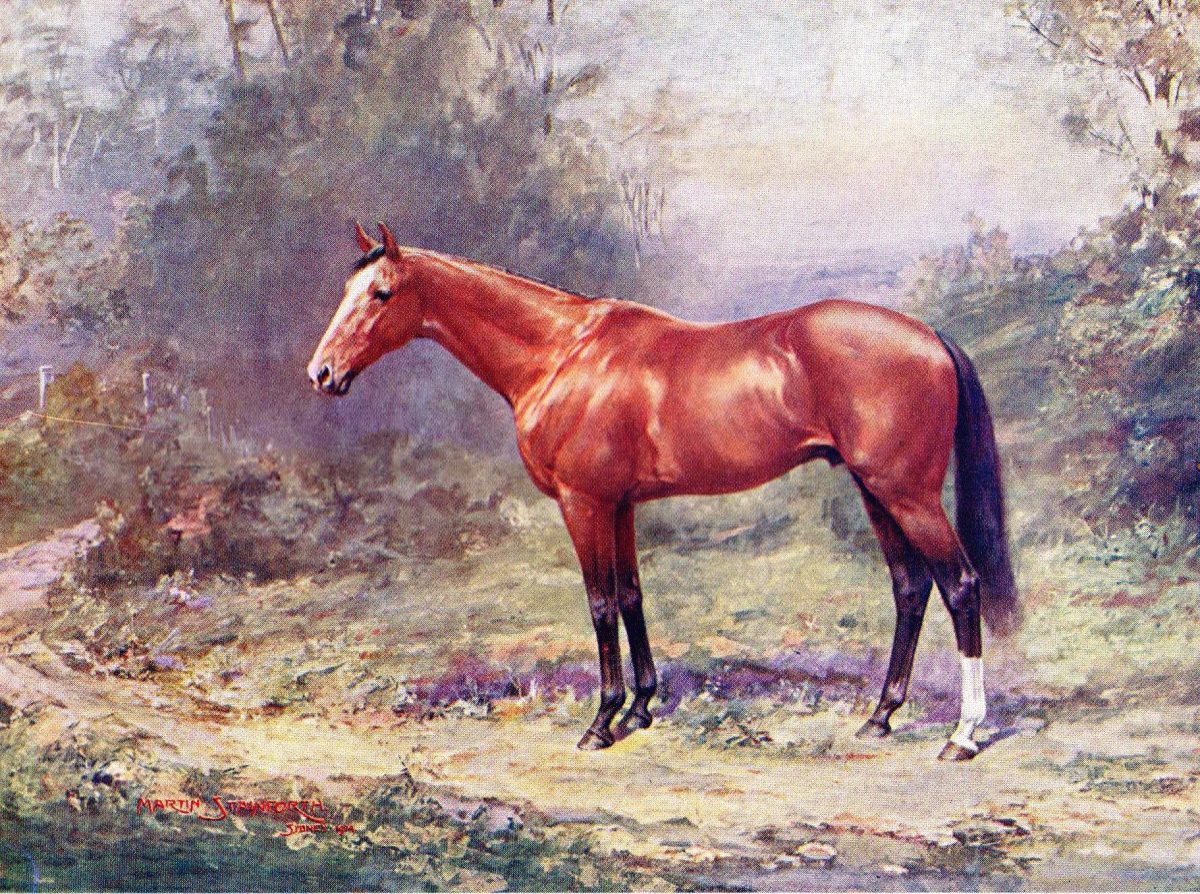Carbine (2)
Plate 3 in ‘Racehorses in Australia’ (Edited by Dr W H Lang, Ken Austin and Dr Stewart McKay): From a painting of the horse (by Martin Stainforth) at the age of 6 years in the possession of Mr F G White.
Carbine (2). Bay Horse by Musket (imp) – Mersey (imp). Winner of £29,626. Sire in Australia of Wallace, La Carabine, etc. Exported to England in 1895, where he sired Spearmint, Greatorex, Fowling Piece etc. Died in 1914 at Welbeck, England.
How Carbine Conquered Sydney
by Mandy Logan | Oct 22, 2021 | 2012-2014
14th January 2005
How Carbine Conquered Sydney
See: https://www.horseinsurance.com.au/how-carbine-conquered-sydney/
The AJC Autumn Carnival is one of the highpoints of the Australian Racing Carnival – Eurythmic, Gloaming, Manfred, Phar Lap, Peter Pan, Tulloch, Galilee, Gunsynd, Kingston Town, to name but a few, and in more recent times Super Impose, Octagonal and Sunline.
But none have come close to emulating the feats of Carbine in his three Sydney campaigns of 1889, 1890 and 1891. Thanks to the research of the AJC racing historian, John Ryan, we now know something of the background to Carbine’s first visit to Sydney.
Carbine travelled to Sydney by train. In 1883 the railway connection between Melbourne and Sydney had been completed with the opening of the railway bridge at Albury. Prior to that time Victorian horses had travelled to Sydney by sea, but in 1889 Carbine, accompanied by trainer Walter Hickenbotham and jockey Mick O’Brien, took the railway route.
On arrival in Sydney they proceeded to the AJC Hotel at Randwick where horse, trainer and jockey had been booked in. At a time when horses were a part of everyday life in Australia, hotels offered accommodation not only to guests but also to their horses.
One of the grandest race meetings ever held in the Colony was anticipated. The racecourse at Randwick was re-opening for the autumn meeting after many alterations and improvements. A new ornamental Clock and Scratchings Tower had been installed and new horse stalls and extensions to the Grand and Leger Stands were in place. The meeting consisted of four days of racing, spread over six days. The cream of Australiasia’s thoroughbreds were engaged – Carbine, The Yeoman and Charmer from Victoria, Abercorn, The Australian Peer and Cardigan from New South Wales, and Locheil, Manton and Cranbrook from New Zealand.
Carbine, a three-year-old, was well regarded for his winning record in New Zealand and in Melbourne, but local sportsmen believed he would meet his match in the Sydney champion Abercorn. And so it proved on the first day, Monday, April 22, 1889. In a fiercely contested finish, Carbine went down by a neck to Abercorn in the Autumn Stakes over one and a half miles (2400m).
From that point on though Carbine was unbeatable. On the Wednesday he contested the two mile (3200m) Sydney Cup. Suffering severe interference near the four furlong (800m) post, Carbine fell back to last and his hopes of winning appeared slight. But under O’Brien’s vigorous riding he gradually made up the lost ground. The Turf Correspondent described the final half furlong when Abercorn and Melos “locked level and raced towards the line, but on the outside Carbine, coming like a locomotive, drew on terms and then like an arrow shot to the front, crossing the other two as he did so. Abercorn was the first of the trio to fall and then the two colts, drawing clear, fought a never to be forgotten batttle in all its bitterness right to the post, Carbine winning in the last stride by a head amidst a scene of excitement that has seldom been witnessed at Randwick”. Carbine’s time of 3.31 was a race record.
The following day, Thursday, Carbine demonstrated his wonderful combination of stamina and brilliance by starting two races – the All-Aged Stakes of a mile (1600m) and the Cumberland Stakes of two miles (3200m) – and winning both convincingly. On the final day, Saturday, he completed a week of unparalleled achievement for a three-year-old by winning the three mile (4800m) AJC Plate.
In the autumn of 1890 Carbine returned to Randwick and again dominated the meeting. He started in the same races as in 1889 – the Autumn Stakes, Sydney Cup, All-Aged Stakes, Cumberland Stakes, AJC Place – and won all five. Altogether he ran nine and a half miles (15,200m) during the week, and in the AJC Plate set an Australasian record time for three miles.
In his third and final visti to the AJC’s autumn meeting, in 1891, Carbine opened his campaign by winning the Autumn Stakes. It was his fifeenth consecutive win, and it was becoming unthinkable that he could be defeated. The third day of the meeting, however, was extremely wet and his trainer, HIckenbotham, decided to run Carbine unshod in the All-Aged Stakes. His one rival, Marvel, was a superb miler and handled the wet track effortlessly. Carbine slipped and slithered on the wet grass and could not get a grip. Before a shocked and disbelieving crowd, Marvel ran to a four length victory.
But the day was not yet over. Some hours later Carbine and Marvel lined up fo the two mile Cumberland Stakes, and this time Carbine was plated. Marvel led for most of the race, and on entering the straight the two horses were on level terms. Marvel made one last move, but Carbine lengthened stride and went away to win easily by seven lengths. As The Australasian newspaper reported: “Carbine routed the usurper, and reasserted in a very decisive way his right to reign as the equine monarch of Australia. And what rejoicings there were! The scene will long live in the memories of those who were fortunate to witness it”. On the final day of the meeting, Carbine added a third AJC Plate to his trophies.
Looking back on these splendid achievements, it is fitting that the Carbine exhibit should hold pride of place at the Australian Racing Museum. His skeleton and the wonderful animation displays which accompany it, the trophies, paintings and memorabilia of his racing career, all remind us of his status as one of Australia’s true wonder horses.
From the Australian Racing Museum and Hall of Fame, Melbourne.
Champions Newsletter Vol 1 2005 pg 11
Talking of Thoroughbred Champions
by Mandy Logan | Oct 22, 2021 | 2012-2014
14th December 2005
See: https://www.horseinsurance.com.au/talking-of-thoroughbred-champions/
TALKING OF THOROUGHBRED CHAMPIONS
English Author Nat Gould reckons the best racehorse he ever saw during his time in Australia was Carbine, or Old Jack as he was known. By Musket from Mersey, Carbine was born in New Zealand and purchased as a yearling by Dan O’Brien for 620 Guineas.
In any other era with the assistance of Radio and TV, Carbine would have been light years ahead of any other thoroughbred in terms of hero status or worship.
Carbine won 33 out of 43 races and was only out of a place once. He won 15 races in succession and 12 races out of 20 running an unlucky 2nd in the two he lost.
Nat Gould saw all of Carbine’s big race wins and when he was sold for stud purposes to The Duke of Portland for £13,000, Gould travelled to the UK on the same vessel, the Orient Liner “Orizaba”.
Gould says that no horse that ever ran in Australia was a greater idol with the public than Carbine.
The Pier in Melbourne was crowded with admirers long before the boat sailed, in fact the authorities had decided to place Carbine on board the day before it had been officially announced, to put the expected crowds off the scent, says Gould.
Nat Gould, born in 1857 in Manchester England was a prolific and very successful English Author, mostly of sporting, and in particular racing novels. He was also a Journalist and was resident in Australia from 1884 to 1896. He spent time in Australia working on several country and city newspapers.
Nat Gould died on 25/7/1919 at Staines, Middlesex, England.
Carbine stood four seasons at stud in Victoria and sired the winners of 203 races in Australia. His first crop included Wallace, who won the Caulfield Guineas, VRC Derby, C. B. Fisher Plate, Sydney Cup and more before retiring to stud himself to sire the winners of 949 races, including two Melbourne Cup winners in Kingsburgh and Patrobas, the great stayer Trafalgar and seven Derby winners.
Carbine also sired Amberlite, who became, in 1897, the first horse to win the Caulfield Cup, AJC Derby and VRC Derby in the same year.
His owner, Donald Wallace, who had made his money in the Broken Hill mineral boom, fell upon hard financial times in the 1890s and Carbine was sold to the Duke of Portland to stand with the great St Simon at the Duke of Portland’s stud at Welbeck Abbey. It was thought that he would be a perfect outcross to St Simon’s female progeny as St Simon was highly strung and Carbine was placid.
Carbine’s son Spearmint won the English Derby in 1906 and went on at stud to sire the dam of the great sire Nearco. Carbine’s blood ran in the veins of both Northern Dancer and Star Kingdom and he can be found in the pedigrees of over fifty Melbourne Cup winners.
As Spearmint was the sire of Sentiment, the dam of Nightraid who sired Phar Lap … the Red Terror was also Carbine’s great-great-grandson.
